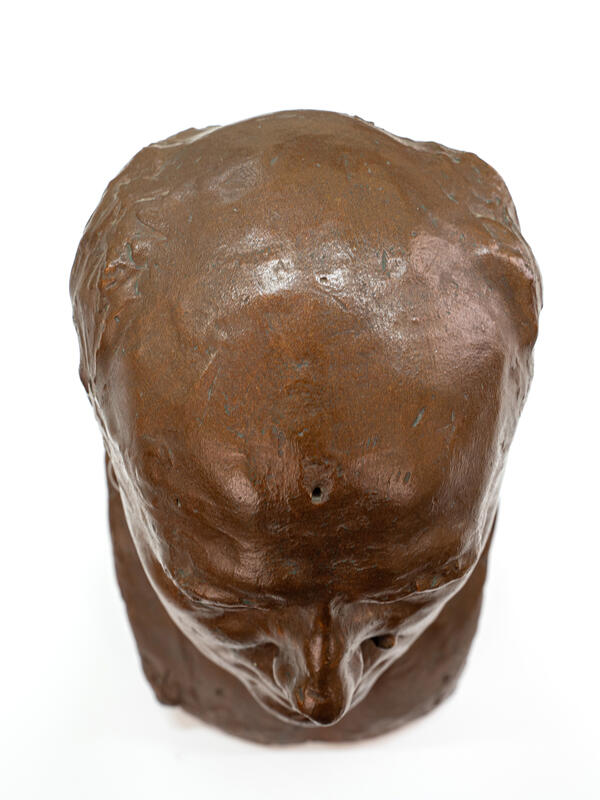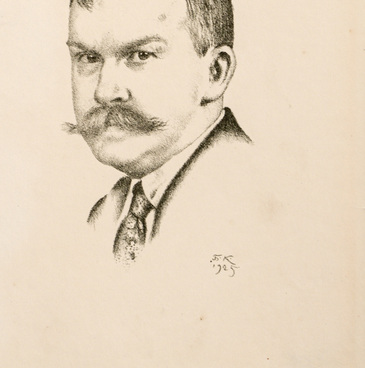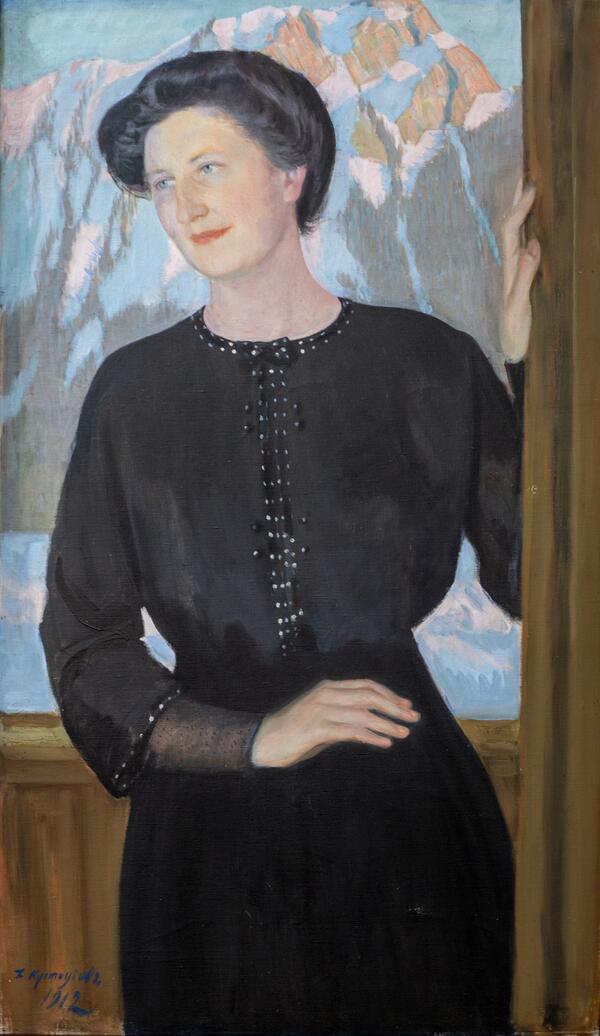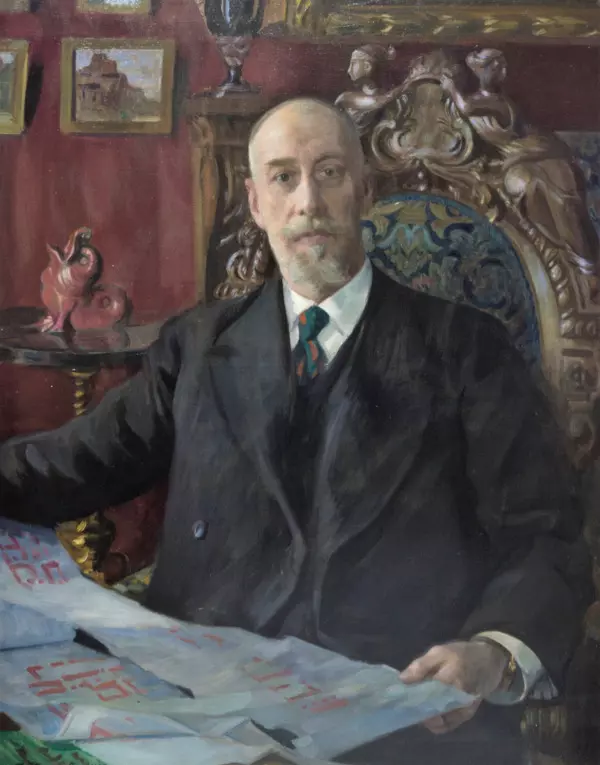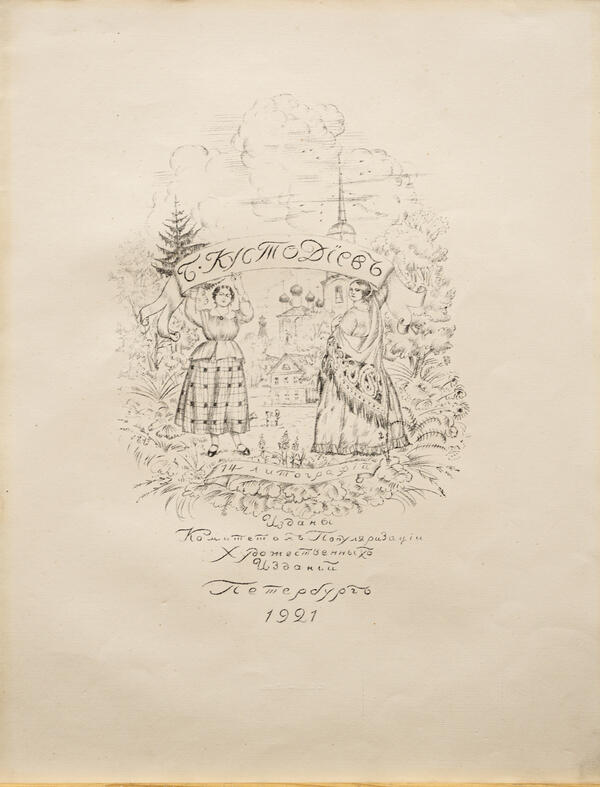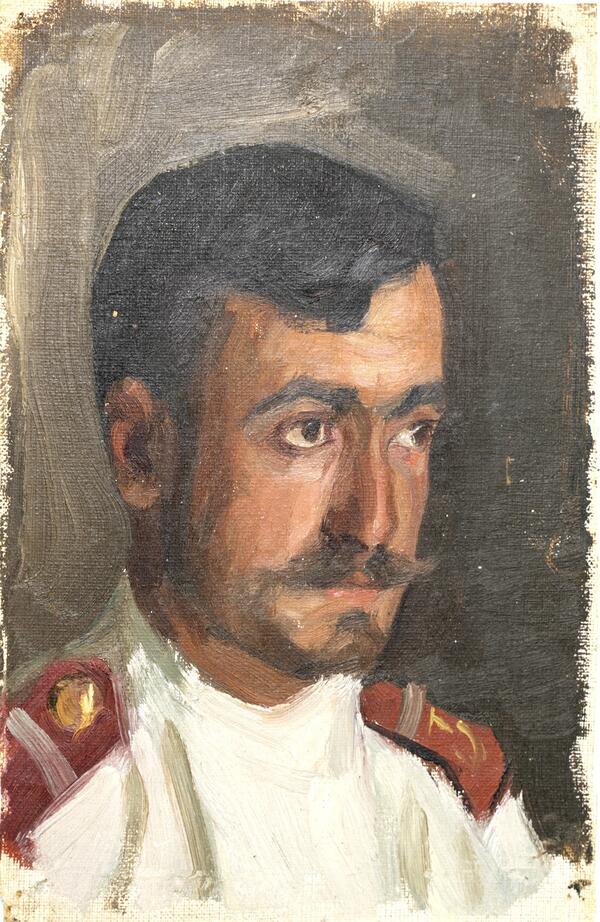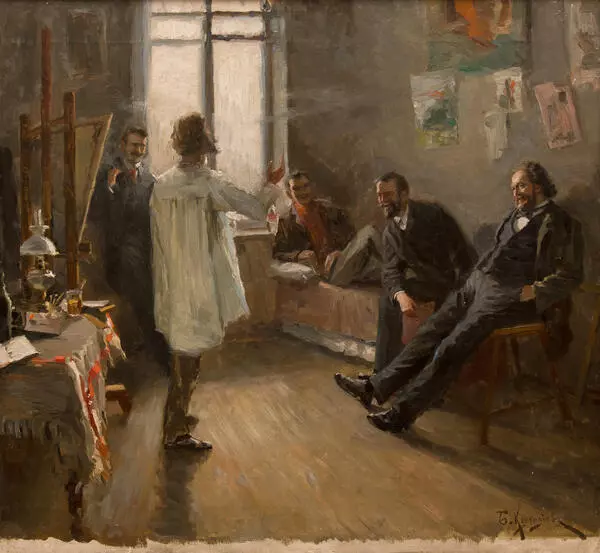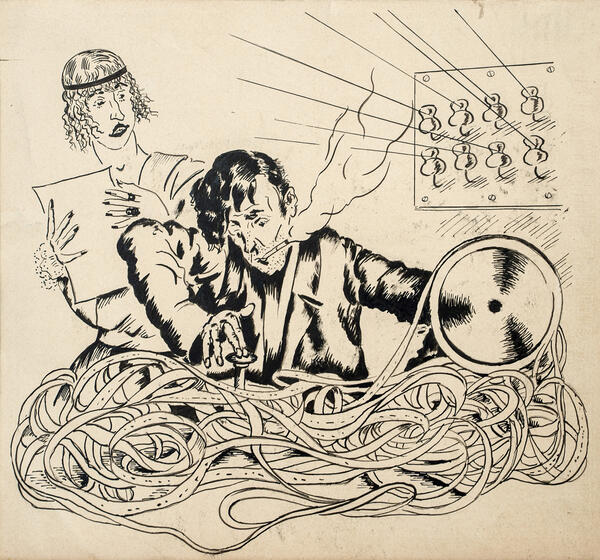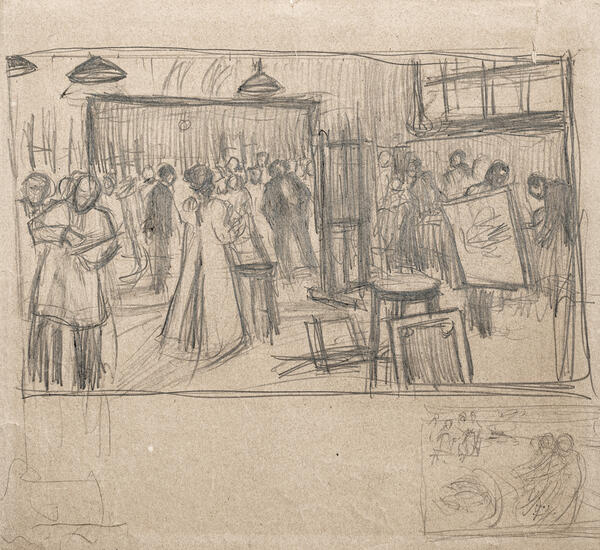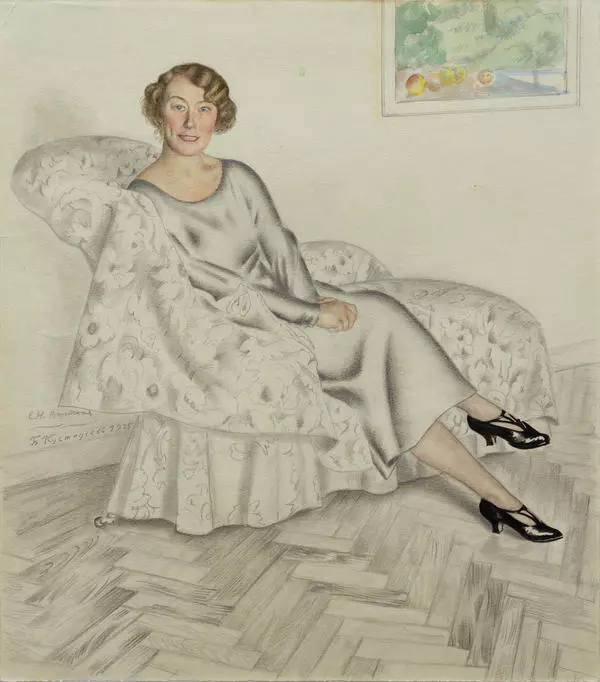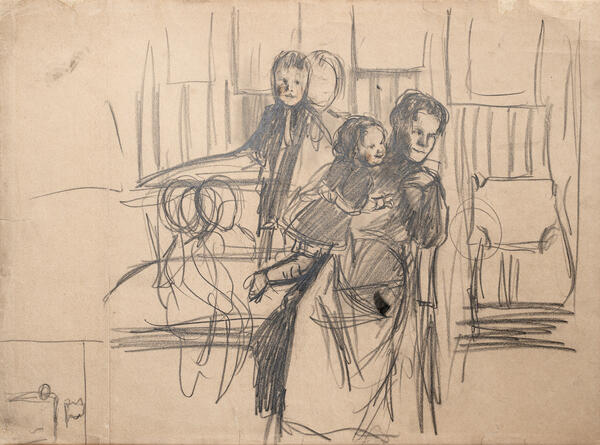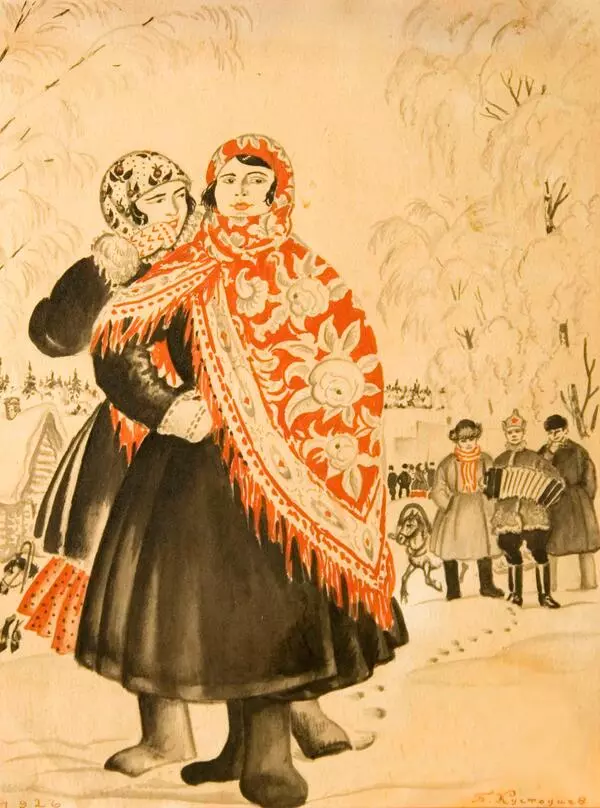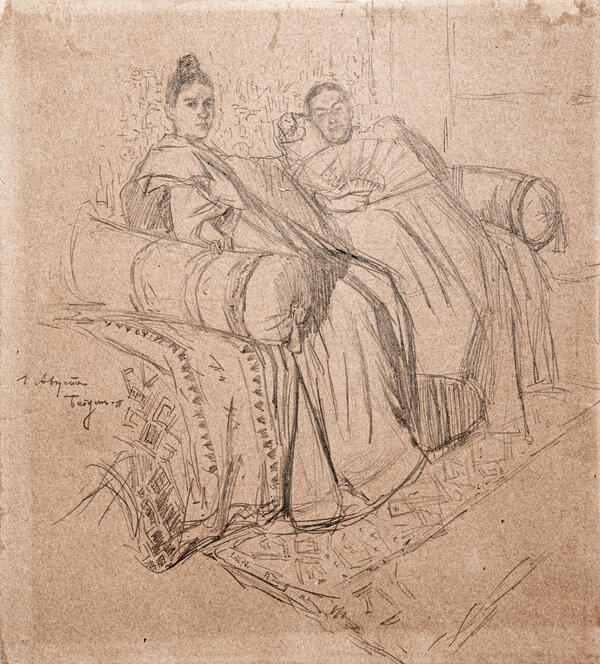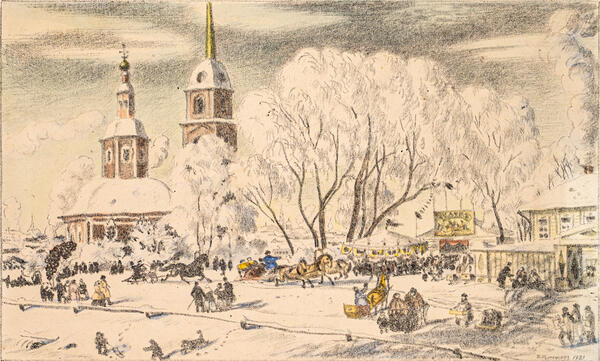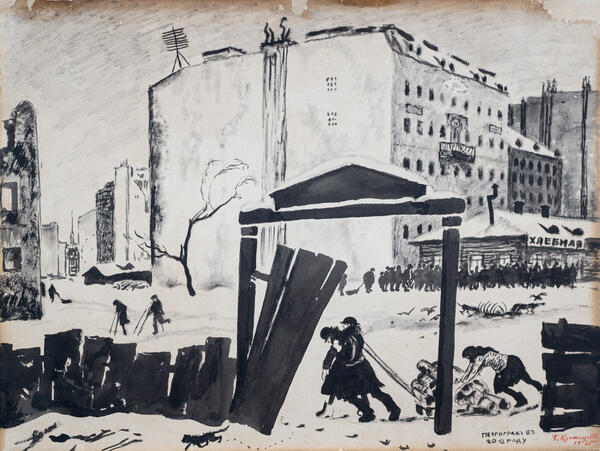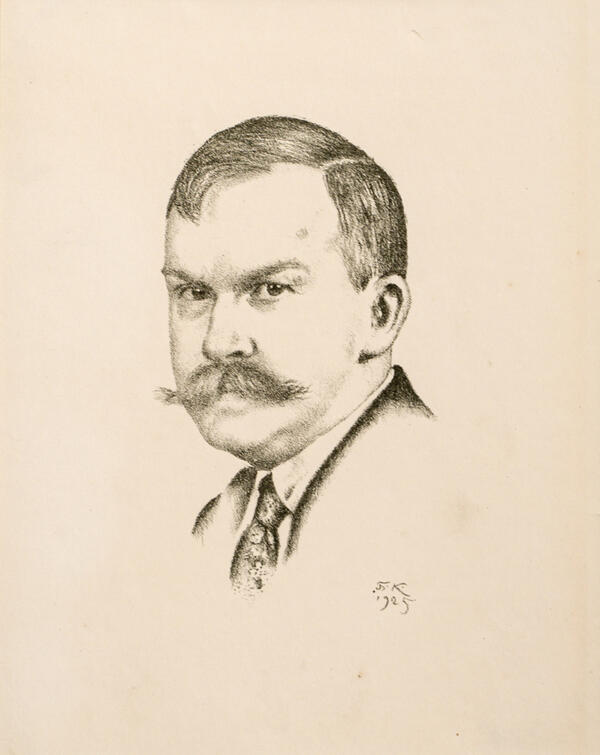An early version of the sculptural portrait of the writer and playwright Fyodor Sologub (Fyodor Kuzmich Teternikov) is exhibited in the Boris Kustodiev House Museum. It was created in 1912 and testifies to the serious achievements of Boris Kustodiev in the field of sculpture.
In 1908–1912, the artist wrote to his wife, Yulia Yevstafyevna: “… you know, I am torn apart between two things — painting and sculpture! I would have loved to just plunge myself head-first solely into sculpture, and, especially when I’m working [sculpting], I don’t think about painting at all.” Kustodiev’s sculptures are distinguished by their realism, conciseness and self-sufficient forms, distinct poses and vivid emotion. His sculptural portraits possess great similarity to their models.
Fyodor Sologub (1863–1927) was initially known as a lyrical poet. His early works were published in 1884. His poems were highly praised by Alexander Blok, Valery Bryusov and Maxim Gorky. Later he acted as a playwright and theorist of the symbolism movement, publicist and translator. His work is imbued with the spirit of European decadence. He collaborated with well-known magazines such as “Northern Bulletin”, “Signal”, “Hell mail” and others. With his novel “The Petty Demon” (1905) he gained particular notoriety as a writer. Kustodiev was well acquainted with Sologub from collaborating with him on theater productions. He repeatedly participated in designing sets for his performances, as well as in the creation of scenery for “kapustnik” performances of actors and artists, the scripts for which were also written by Sologub.
In the sculptural portrait, Kustodiev somewhat idealizes the writer’s image, finding analogies with the Roman portrait of the first centuries AD. In the sculpture Sologub has a noble, thoroughbred, clean-shaven face with a serious, thoughtful, deeply introspective expression — all this is conveyed very precisely and succinctly. The dark brown color of the tinted plaster makes the piece expressive and complete.
In March 1914, the Tretyakov
Gallery acquired a later version of this portrait, made in marble. The director
of the gallery, artist Igor Grabar, highly praised Kustodiev’s work:



